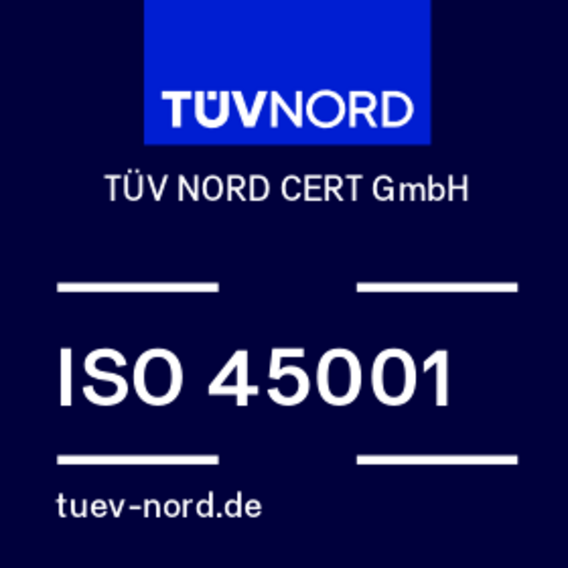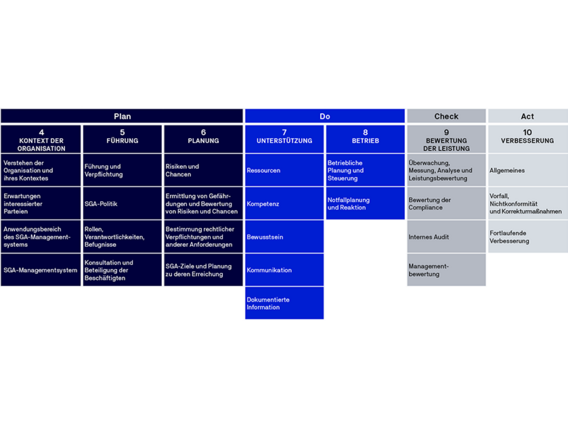
Healthy and motivated employees are an important factor for the economic success of a company. Occupational health and safety management systems now make a major contribution to preventing injuries and illnesses at work. They provide companies with a framework for identifying, proactively minimising and eliminating potential and existing risks in the workplace. In this way, companies not only demonstrate a sense of responsibility, but also reduce their costs through lower accident and illness rates and increase employee satisfaction at the same time.
The ISO 45001 standard supports continuous improvement in international occupational health and safety. It was developed by the International Organisation for Standardisation (ISO) and replaced the certification according to the previous British standard BS OHSAS 18001 as the basis for the certification of an internationally recognised occupational health and safety management system on 30 September 2021.
